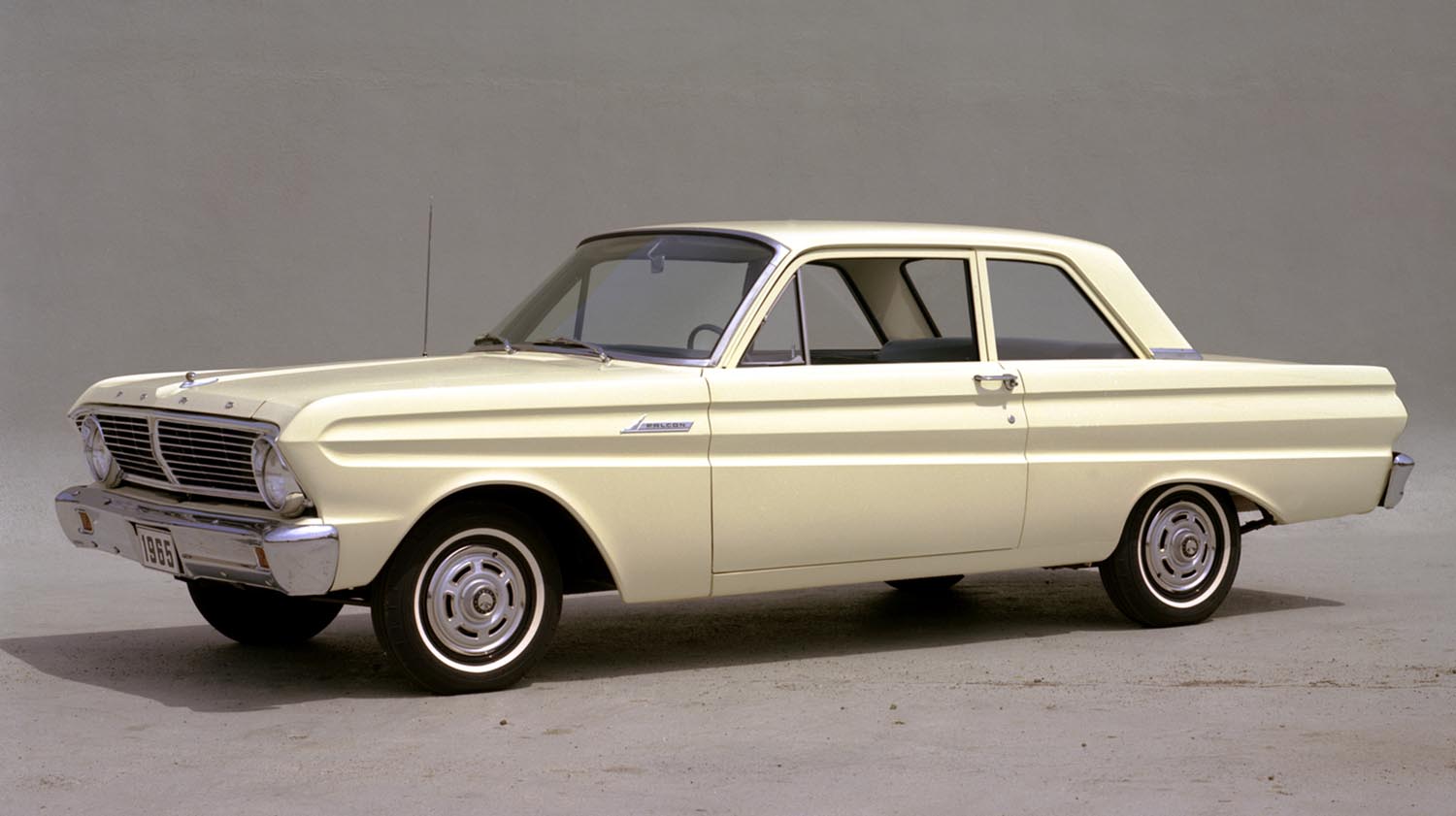
The 1965 Ford Falcon two-door sedan is more than just a footnote in automotive history. It represents a critical moment for Ford Motor Company. This car was the final iteration of the second-generation Falcon. It stood as the practical, reliable alternative to the flashier models of the era. The Falcon’s heritage as a groundbreaking compact truly sets it apart. It was designed for efficiency and mass appeal from the start.
The Genesis of a Compact Class
The Falcon nameplate launched in 1960. It was driven by Ford executive Robert McNamara. He aimed to deliver a sensible, scaled-down American car. The initial compact size was a direct response to imports like Volkswagen. This philosophy resulted in phenomenal early sales success. The Falcon proved that the American public was ready for a smaller, economical choice. This established a completely new vehicle class.
Second Generation Design Refresh
Ford gave the Falcon a more chiseled, squared-off look in 1964. The 1965 Ford Falcon two-door sedan carried this updated styling. It featured a sharp, horizontal grille pattern. The hood and fenders had a clean, crisp appearance. Unlike the earlier rounded models, this design had a more modern, substantial presence. This helped it compete with newer rivals like the Chevy II. For 1965, the Falcon received only minor trim updates.
The Mustang Connection
The true importance of the 1965 Falcon lies beneath its skin. Its unibody platform was a brilliant piece of engineering. This durable, proven architecture was not entirely new. It had been refined since the Falcon’s debut. Crucially, this platform provided the foundation for the Ford Mustang. Therefore, the humble Falcon is the direct ancestor of the iconic pony car. Its chassis and components made the Mustang possible.
The Final Year of a Classic
The Falcon was overshadowed by its successful offspring in 1965. Mustang sales quickly began to dominate. Consequently, Ford reduced the number of available Falcon models. The two-door sedan remained a core offering. It upheld the Falcon’s original mission of affordability. However, it was clear the market’s appetite was shifting toward sportier options. This marked the end of the Falcon’s time in the spotlight.
Performance and Powertrain Variety
The 1965 Ford Falcon two-door sedan came with several engine options. The standard engine was the reliable 170 cubic inch inline six-cylinder. It produced 105 horsepower. Buyers could upgrade to a smoother, more powerful 200 cubic inch six with 120 horsepower. For a substantial performance boost, the 289 cubic inch V8 was available. This V8 engine produced 200 horsepower. Transmission options included a three-speed manual, a four-speed manual, and the three-speed Cruise-O-Matic automatic. These choices allowed drivers to tailor the car to their needs. The rear-wheel-drive platform ensured predictable handling and an authentic classic feel.
The 1965 Ford Falcon two-door sedan represents a fundamental shift in American automotive thinking. It was a sturdy, straightforward, and dependable machine. It paved the way for the smaller, more efficient cars that would follow. Despite being eclipsed by its famous relative, the 1965 Ford Falcon two-door sedan retains its identity as a true American icon. Its importance as a foundation for performance models is undeniable. This model showcases the moment utility and style began to merge in the mid-1960s.
Disclaimer: Content on this site is for informational purposes only. Vehicle specs, pricing, and availability may change. Always verify details with official sources before making decisions. Opinions are those of the authors.
Source: Ford Heritage Vault
